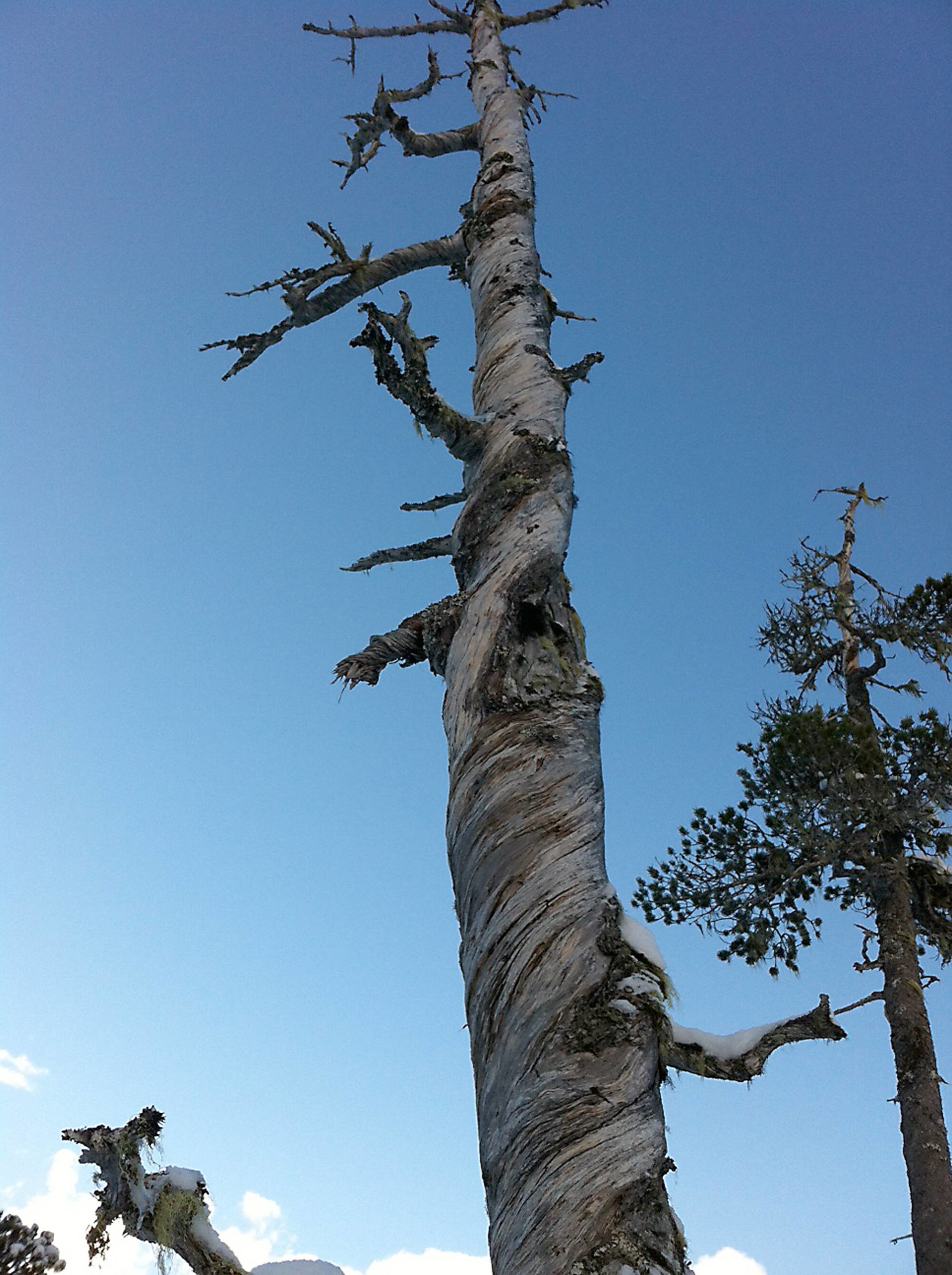By Mary F. Willson
Strolling on snowshoes around the Lower Loop at Eaglecrest one gray, damp day, we found, as expected, that conditions for reading animal tracks were bad on the rain-packed snow. So we counted trees instead: we had noticed previously that some of the dead or dying pines in the meadows had very twisted trunks, mostly with an upward twist to the right. So this time, we counted the pines with right or left twists and also checked whatever dead hemlocks or spruces we encountered. This informal, unscientific survey produced a series of questions, largely unanswered.
As a curious naturalist, I find it great fun to generate focused questions, even if I can’t answer them. This essay is an example of how the process goes.
—Is there something particularly about pines that produces the markedly twisted trunks? The other conifers in the Juneau area occasionally show such marked twists (but seemingly fewer in proportion to the total population of those species) and we have the impression from other observations elsewhere that deciduous tree trunks don’t generally twist like these pines do.
—If the twists occur predominantly in pines (that casual observation should be verified, of course), perhaps there are intrinsic factors, such as differences in the cells that make the wood, that predispose pines to twist. The principal wood cells of conifers do differ from those of deciduous trees, but do pines differ from other conifers? Or perhaps there are environmental factors, such as exposure to wind and snow, that contribute to twisting? We would need to find a good sample of pines that grew in more protected circumstances to examine that possibility.
—We noted that most of the twisted pines have right-twists. Along one section of the Lower Loop, Righties outnumbered Lefties more than fifty to one. However, a casual check along the CBJ Crow Hill trail found very few twisted pines and there were proportionately more Lefties there.
So now the questions can be asked: Is the predominance of Righties due to some factor of genetics (or very early development)? Is there some environmental difference between the two locations that contributes to the very different frequencies of different twists? Or is it an accident of genetics and who happened to colonize Crow Hill vs the Lower Loop?
—As luck would have it, on the return loop, we spotted a long-dead tree, probably a pine, that had broken off near the base, exposing a central core of straight-grained wood surrounded by many layers of twisted wood. Something apparently had changed as the tree grew—the older growth rings made straight wood but the later growth rings made twist. But what?
It can be frustrating to generate lots of questions for which we have no ready answers, but it is good fun to think about the complexities! Attentiveness to things around us as we walk and thinking about the things we observe adds richness to our strolls.
• Mary F. Willson is a retired professor of ecology. “On the Trails” appears every Wednesday in the Juneau Empire.

